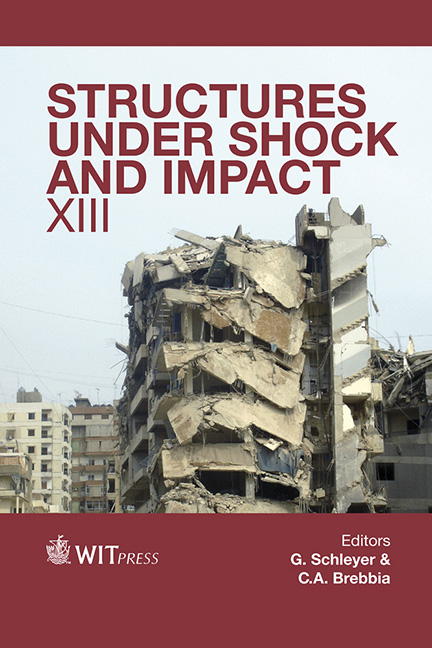Investigating Projectile Penetration Of Concrete Blocks Reinforced By Ceramics
Price
Free (open access)
Transaction
Volume
141
Pages
12
Published
2014
Size
1917 kb
Paper DOI
10.2495/SUSI140101
Copyright
WIT Press
Author(s)
R. Tawadrous, W. Attia & M. Laissy
Abstract
Numerical simulation of the response of concrete structures to impact loading is an important tool in both the design of hardened protective structures and in the planning for effective attacks against such structures. This paper presents the development of an accurate finite-element model using AUTODYN to study the response of concrete structures reinforced by ceramic (Al2O3-99.7%) rods and plates exposed to 23 mm projectile. Concrete and ceramic are modelled using a combined mesh and meshfree numerical technique. The used meshfree Lagrangian technique (SPH) is to overcome problems of mesh tangling and remove the requirement for the use of erosion algorithms. The technique also allows an explicit representation of Ceramic through (SPH) element formulation. In such a model, the concrete region local to the penetrator, which experiences large deformation, is represented using the SPH solver. The modelled penetrator and the concrete further away from the impact observed to undergo little or no deformation by using the Lagrange solver. The aim of this paper is to study numerically the penetration resistance of concrete structures reinforced by ceramic (Al2O3-99.7%). The main findings show an enhancement in the penetration resistance of about 45% while using ceramic. Here, we used ceramic because of its electric, magnetic, and thermal insulation. Hence, we can use concrete structures reinforced by ceramic in many types of medical, nuclear, power generating and electronic applications. Keywords: penetration, concrete, ballistic impact, ceramic, AUTODYN3D.
Keywords
penetration, concrete, ballistic impact, ceramic, AUTODYN3D.





